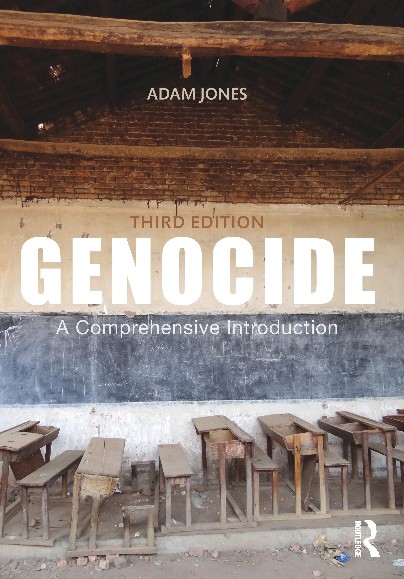 |
| Female relatives of victims of the Srebrenica massacre gather during the annual service at the Srebrenica memorial, Potocari, Bosnia and Herzegovina, July 2007. (Adam Jones) |
By Matthew Brunwasser
The New York Times, May 30, 2011
"Across from the abandoned Potocari battery factory, where Muslim residents of this infamously brutalized town were imprisoned in 1995 before women were separated and the men and boys taken away to be killed, a memorial center has risen. A sweeping graveyard and tall white stones mark the final resting place of the remains -- many of them only partial -- where family members can visit, mourn and remember. Looking across the lush hillside, Sadik Selimovic, an investigator from the Bosnia Missing Persons Institute, said more mass graves needed to be opened. 'It brings absolute peace to the families,' he said. 'I know because I know where my father was killed, who killed him, how he was killed and I know where my brother's body was found.' Two brothers and a nephew are still unaccounted for. Even more than lending peace of mind, this memorial represents a new chapter in Balkan history. As Ratko Mladic, accused as the architect of the massacre of about 8,000 Srebrenica Muslim men and boys, is expected to be sent to the UN tribunal in The Hague, the terrible process of piecing together the remains of Srebrenica’s dead provides facts, not the myths of which Balkan lore has so long been spun. For centuries, history here has been written in cycles of violence, reconciliation, new wars, exhaustion, then more bloodshed. Each turn creates too much suffering to consume, and is grist for fresh lore to reinforce tribal instincts. The unearthing of the remains of Srebrenica's victims -- scattered over mass graves methodically dug by the Bosnian Serbs -- for once offers proof of what happened. Advances in DNA testing have allowed investigators to reassemble body parts scattered over several mass graves into a corpse that can be buried, and mourned.
Much of this work takes place in two facilities run by the International Commission for Missing Persons, created in 1996 at the instigation of President Bill Clinton, in Tuzla, two hours' drive northwest of Srebrenica. In the awkwardly named identification coordination center -- a sterile office in a large sports arena -- technicians in coveralls work at bone cutting and cleaning lab. A blood analysis facility has hi-tech machinery to extract DNA samples. Walls are lined with files of each documented case; there are some 90,000 relatives' blood samples in all, ready to be matched with any sliver of bone found. Half of a second building houses a cold storage morgue for body remains. Paper bags on shelves above the parts store clothing and possessions found with the bones. There is an earthy smell of death; four anthropologists, including a Canadian and a Serb, work here, with a dozen Bosnian colleagues. The DNA identifications are 99.9 percent accurate, said Laura Yazedjian, an anthropologist from Vancouver, British Columbia, as she examined a skeleton on a table. 'Now no one can deny the scale of what happened,' she added. The first exhumations of mass graves thought to contain the remains of Srebrenica victims were conducted by the International Criminal Tribunal for the former Yugoslavia -- The Hague court that now hopes to try Mr. Mladic for alleged war crimes -- in the 1990s. Traditional identification meant that photographs of personal belongings associated with corpses were published in a book and copies were circulated in local communities. If a relative recognized a possession, a DNA test was used for confirmation. Less than 15 percent of identifications turned out accurate. In 2001, computerized DNA testing was introduced -- and real closure began. The Tuzla lab has helped identify the remains of 16,280 people of the 23,000 still reported missing after the 1992-95 war in Bosnia, in which some 100,000 people are now thought to have died. The commission has established the genetic identification of some 6,590 individuals killed at Srebrenica. Factoring in projections of how many bodies may never be found, the total number of massacred is thought to be around 8,100. [...]"














No comments:
Post a Comment
Please be constructive in your comments. - AJ